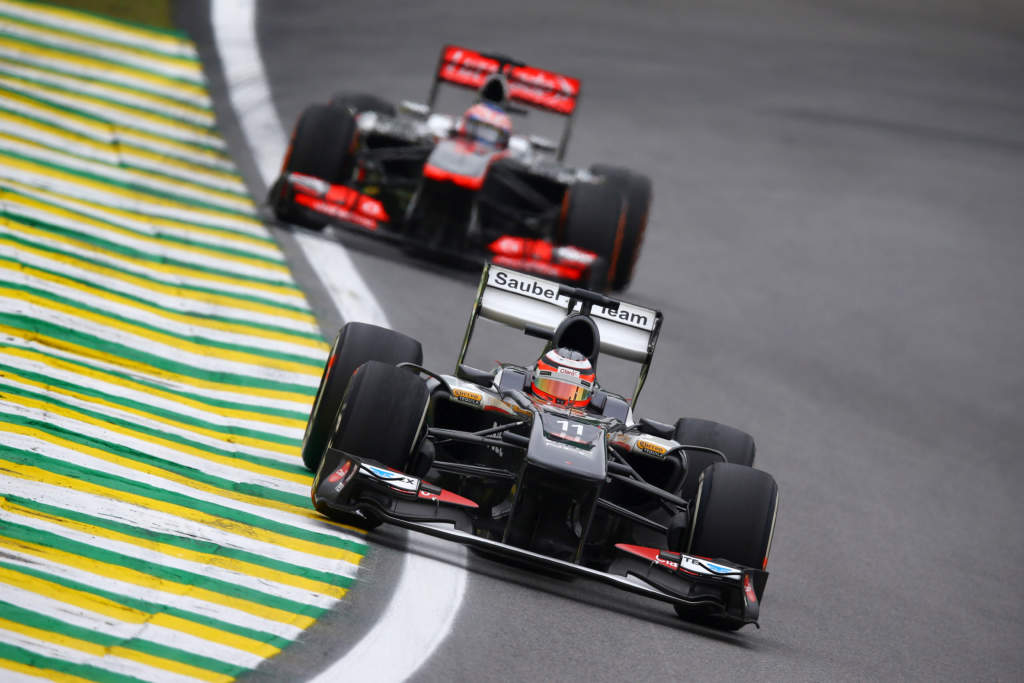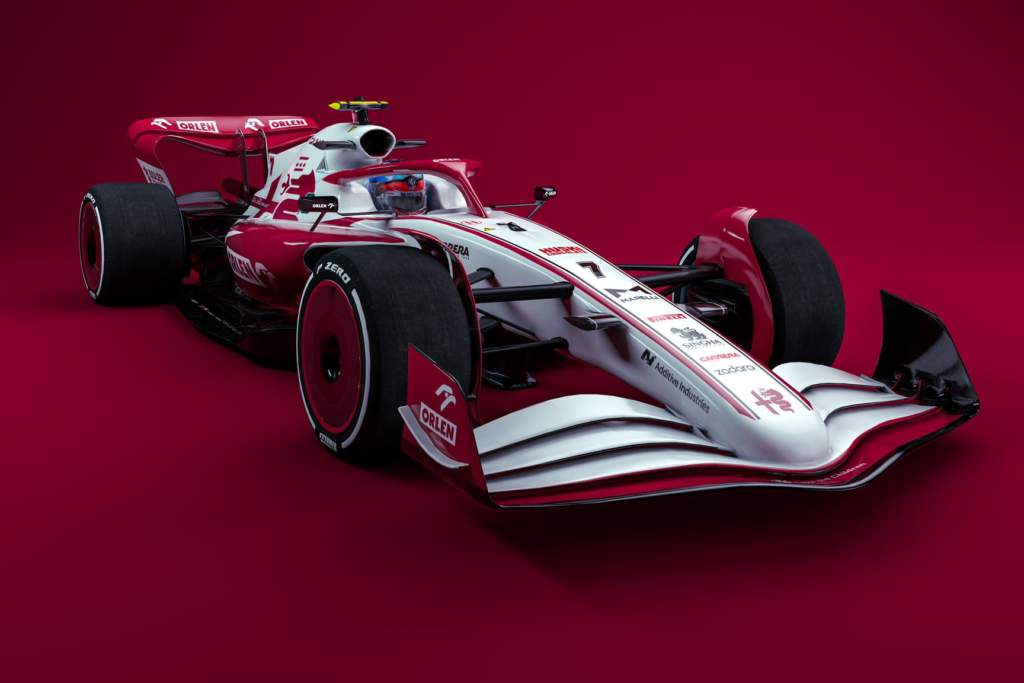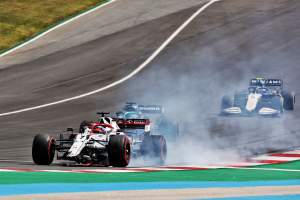Up Next

Alfa Romeo’s “real focus” this year is on its 2022 car, which offers the chance for it to learn from the pain of recent seasons and use the opportunity presented by the new technical regulations to eliminate the disadvantages it has been carrying since Formula 1’s last major rule change.
The Sauber-run team is currently ninth in the constructors’ championship, having not finished higher than eighth since the start of the V6 turbo hybrid era in 2014. During the early years of this period, the team was beset by financial uncertainty that was only resolved by its sale to Longbow Finance in mid-2016.
That buyout came too late to ensure Sauber hit the ground running for the high-downforce aerodynamic regulations in 2017 and technical director Jan Monchaux believes it has been playing catch-up ever since. But with significant investment in the team since then, it’s hoped that Alfa Romeo can have a stronger start to the new-rules era.
“The real focus is next year,” Monchaux tells The Race. “We made a decision with the team, the team principal [Frederic Vasseur], with the owners and to some extent also the sponsors that we would make that strong call to stop quite early on 2021 to maximise our time and our chances to recover and be fighting with the others from the onset of the new rules,” says Monchaux.
“The last big overhaul of the regs was 2017 and Sauber was another company that started the season with the one-year-old [Ferrari] engine and a car that had a performance far from the optimum, which we are still paying the price for.

“With the new rules, it makes it very hard if you start a new regulation cycle on the back foot.
“Our focus is to try everything we can to deliver the best possible car and put ourselves in a much better situation from the very beginning of the new regulations and not start on the back foot, 2.5-3% away and running behind like the last five years.”
Alfa Romeo has struggled in recent years, particularly last year when it made up one-third of the so-called ‘Class C’ pack along with Williams and Haas, scoring only eight points. While it has been more competitive this year, Alfa Romeo has only picked up three points and lies ninth in the constructors’ championship behind Williams.
But last year forced significant soul-searching, which it’s hoped has had a positive impact on the team technically. It is also set to benefit from its investment in a driver-in-loop simulator in 2019 that is now on the brink of playing an active part in car development.
Its struggles in 2020 were partly down to engine supplier Ferrari’s problems, which continue this year despite Ferrari having improved its power unit package to the point where it’s reckoned to be broadly comparable with the Renault that powers the Alpine – with further improvements to come with upgrades before the end of the season. But Alfa Romeo could not afford to blame the engine for all ills.
“I think 2020 was a very, very painful season for us but there are a lot of positives when I look back because it forces us to question everything and not just take the easy way and say ‘we are all aware of the situation with the power unit’,” says Monchaux. “Yes, it was a big player but that was not in our control and we knew that they [Ferrari] would come back to recover the performance.
“We went through an extremely difficult inspection exercise, a 360-degree review questioning our methodology, windtunnel, the simulation [tools], absolutely everything. And we also listed the things we should have in place that we didn’t have to make sure that when we develop in the windtunnel it translates to performance on the track.
“I have seen a lot of very encouraging signs that we have made a step, which I am not sure we would have made if we did not have that blow on the power unit side that spoiled the entire season.
“So things have changed internally in terms of methodology, which we were discussing for a few years but we were not brave enough to do because in ‘18 and ‘19 we were scoring points regularly. Changing a system that seems to be progressing and generating positive results is a tough decision that the team was maybe not brave enough to do.
“It was quite clear that once you had subtracted the power unit side, those teams who we were closer to the previous season had made a larger step on the car than we did and this forced us to question absolutely everything.
“We have already seen a few things this year which are natural consequences of minor changes we have been doing internally and I hope we will see even more of that with the new car.”
Alfa Romeo must make a big step if it is to recapture the form that it produced before the change to the V6 turbo engines in 2014. In 2012, it claimed four podium finishes and finished sixth in the championship, and it was also a strong performer in the second half of the following season spearheaded by Nico Hulkenberg.

Vasseur has regularly described it as a “young” team given the scale of the rebuilding project, but despite a season in which Alfa Romeo has not had the results its car performance merits thanks to a combination of mistakes on and off track, Monchaux is upbeat about the progress.
“Everything is on plan,” he says of the rebuilding. “But in the big picture we’re probably not where we would like to be because if that was the case we wouldn’t be making so many mistakes, which is costing us.
“But also it’s [something] about the team that is invisible to the outside. It is growing, there are a lot of very good things happening which are quite stimulating for the future.
“I would like to be a step ahead in terms of cohesion and really be a step closer to the high performance team that a Formula 1 team wants to be, we are never really satisfied. Even if you are P1 then there’s always things you would like to be better and be better sooner rather than later so I wouldn’t put too much weight in personal opinion on that because I will never be happy.
“We are in a decent position because we have the tools, we have the financial backing, we have people, we have the organisation in place.”
While Monchaux is encouraged by the progress being made on the 2022 car, like all teams Alfa Romeo cannot be sure what level of performances its rivals will deliver.

Next year’s cars feature simplified aerodynamics and the return to full-on ground effect with the addition of venturi tunnels down each side of the car. This will fundamentally change the way performance is achieved, although it will continue to be all about downforce levels.
“Part of me is happy, but I can’t be completely happy because maybe the other teams are finding just as much as we found,” says Monchaux. “Therefore the internal motto is we keep our head down and we keep working hard.
“So far, there is nothing where I am extremely unhappy and where we are completely behind on the target, but the target is subjective. If our target is too low and we achieve it then we are slow, but all in all, right now, it feels OK.”
It’s impossible to say what is possible for a team like Alfa Romeo next year. While you can make a case for it taking a good step forward, you can say the same about every team on the grid.
But Monchaux is setting sights on being a competitive force in the midfield up, especially with the promise of another big step from engine supplier Ferrari.
“Yeah, there is no doubt whatsoever,” he says when asked if it’s realistic to be at a similar level to a team like Alpine next year. “We’ve got the people, we’ve got the tools, we’ve got the financial resources that are needed and we’ve got the backing also.
“If we fail – and that’s not the plan, that’s not the agenda – it will be down to us.”







